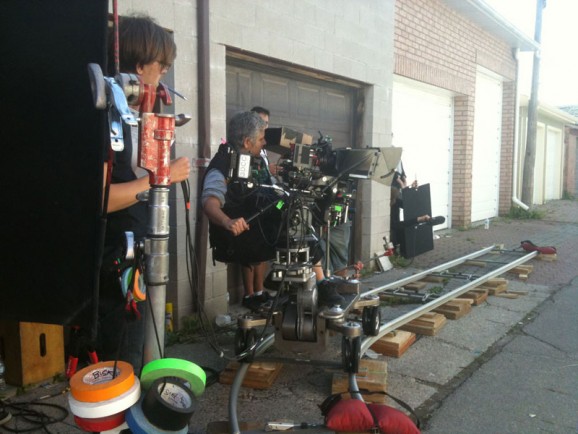Inna Tsirlin, Robert S. Allison, Laurie M. Wilcox
Crosstalk remains an important determinant of S3D image quality. Defined as the leakage of one eye’s image into the image of the other eye crosstalk affects all commercially available stereoscopic viewing systems. It is well established that crosstalk decreases perceived image quality and causes image distortion (Seuntiens et al. 2005, Wilcox & Stewart, 2002). Moreover, visual comfort decreases and perceived workload increases with increasing crosstalk (Kooi and Toet, 2004; Lambooij, 2010; Pala et al. 2007). In a series of experiments we have shown that crosstalk also affects perceived depth magnitude (Tsirlin et al. 2011a; Tsirlin et al. 2011b). In our previous experiments we used two white bars on a black background, and measured the perceived depth between the bars as a function of disparity and degree of crosstalk. The data showed that as crosstalk increased perceived depth decreased. This effect was intensified for larger disparities. We found the effect was present regardless of whether the ghost image was spatially separated from, or overlapped with, the original image. The experiments described here extend our previous work to complex images of natural scenes.
We controlled crosstalk levels by simulating them in images presented on a zero-crosstalk mirror stereoscope display. The stimulus was a color image of our laboratory that showed a cluttered scene composed of furniture and objects. The observers were asked to estimate the amount of stereoscopic depth between pairs of objects in the scene. We used two different estimation methods – a virtual measurement scale and a disparity probe. Data show that, as was the case with simple line stimuli, depth in this natural scene was dramatically affected by crosstalk. As crosstalk increased perceived depth decreased; an effect that grew with increasing disparity. Interestingly, observers overestimated the depth in displays that contained no crosstalk. We propose that this overestimation is the result of the presence of pictorial cues to depth (perspective, texture gradients etc.) and familiarity with the real size of the objects depicted in the image. This hypothesis was confirmed by a control experiment where observers estimated depth in the same natural scene presented in 2D instead of S3D. Although there was no stereoscopic depth in this case, observers still perceived some depth between object pairs. Some observers spontaneously reported nausea and headaches after performing the task in S3D, which confirms previous findings that crosstalk causes discomfort in viewers (Kooi and Toet, 2004). Taken together these results show that our previous findings generalize to natural scenes showing that crosstalk affects perceived depth magnitude even in the presence of pictorial depth cues. Our data underscore the fact that crosstalk is a serious challenge to the quality of S3D media and has to be carefully addressed by display manufacturers.

 3D Film Innovation Consortium
3D Film Innovation Consortium














